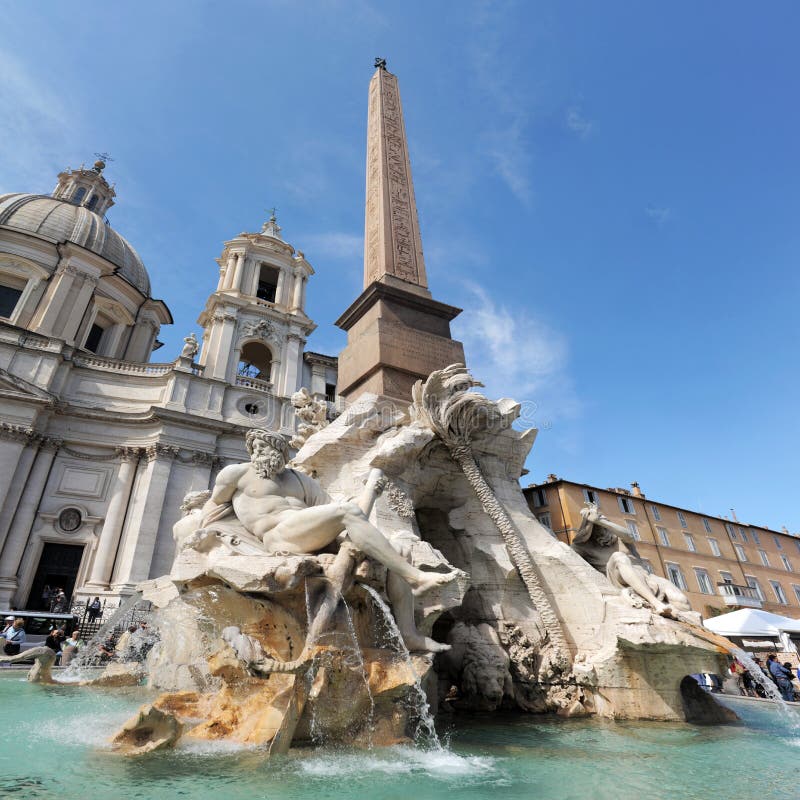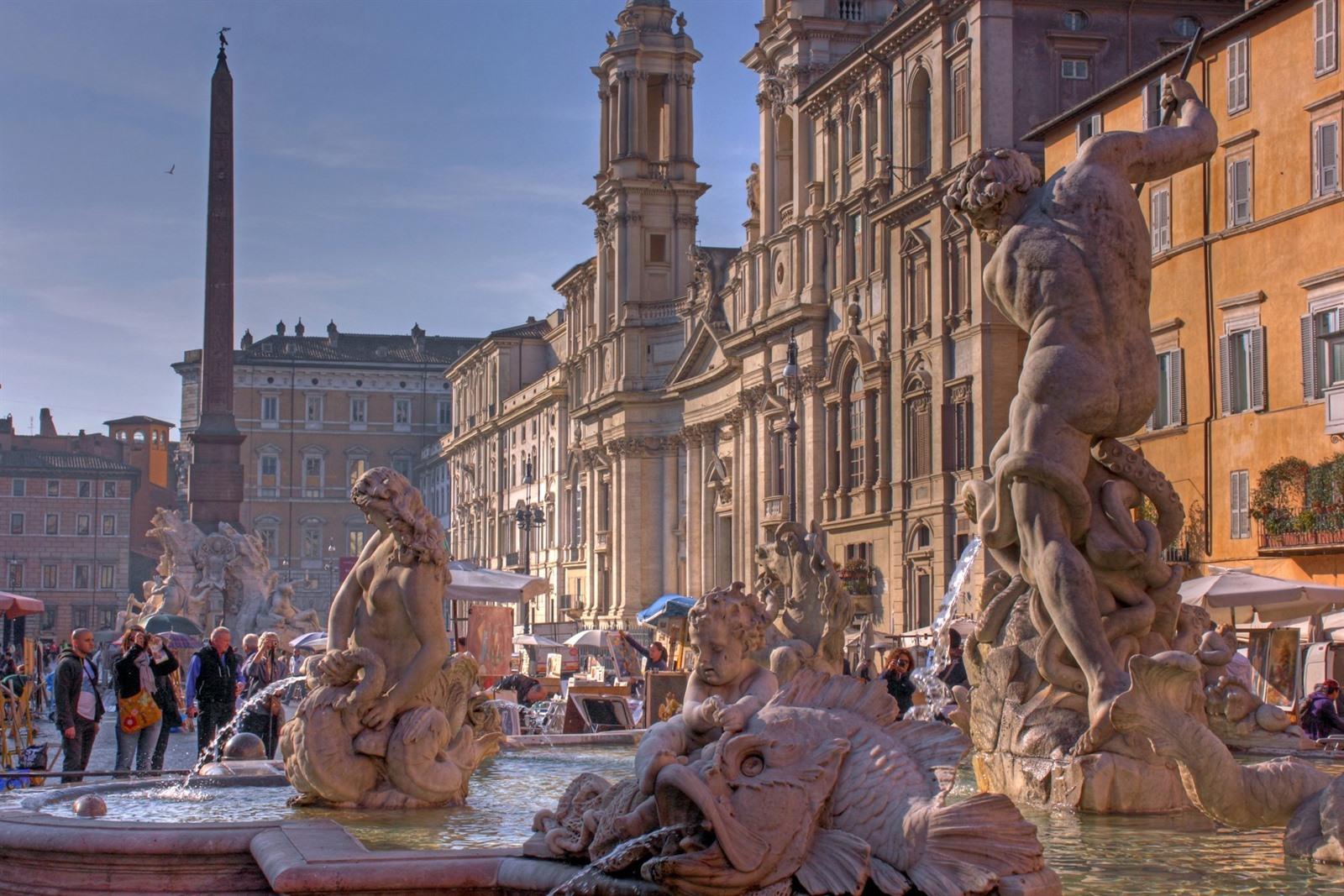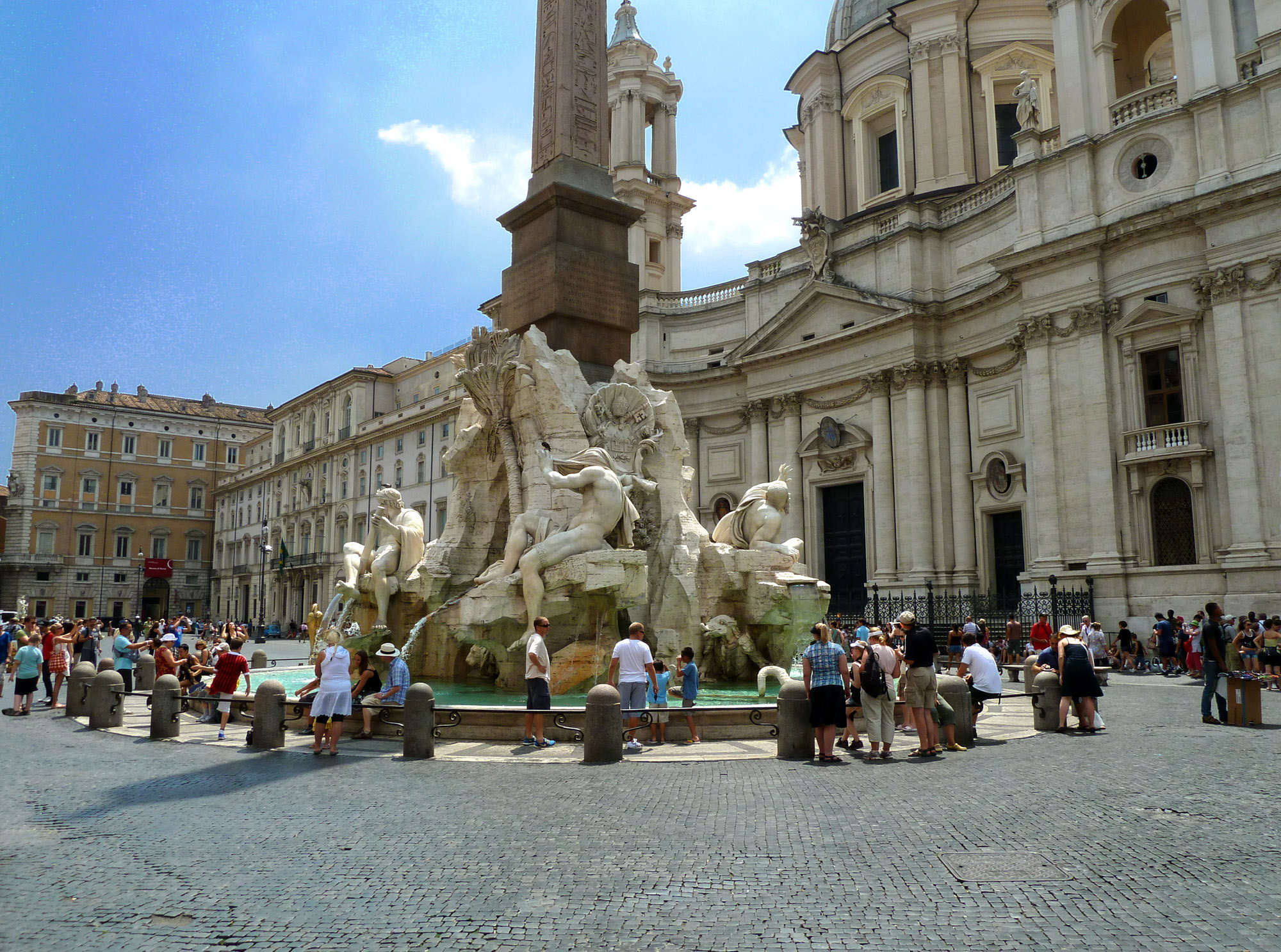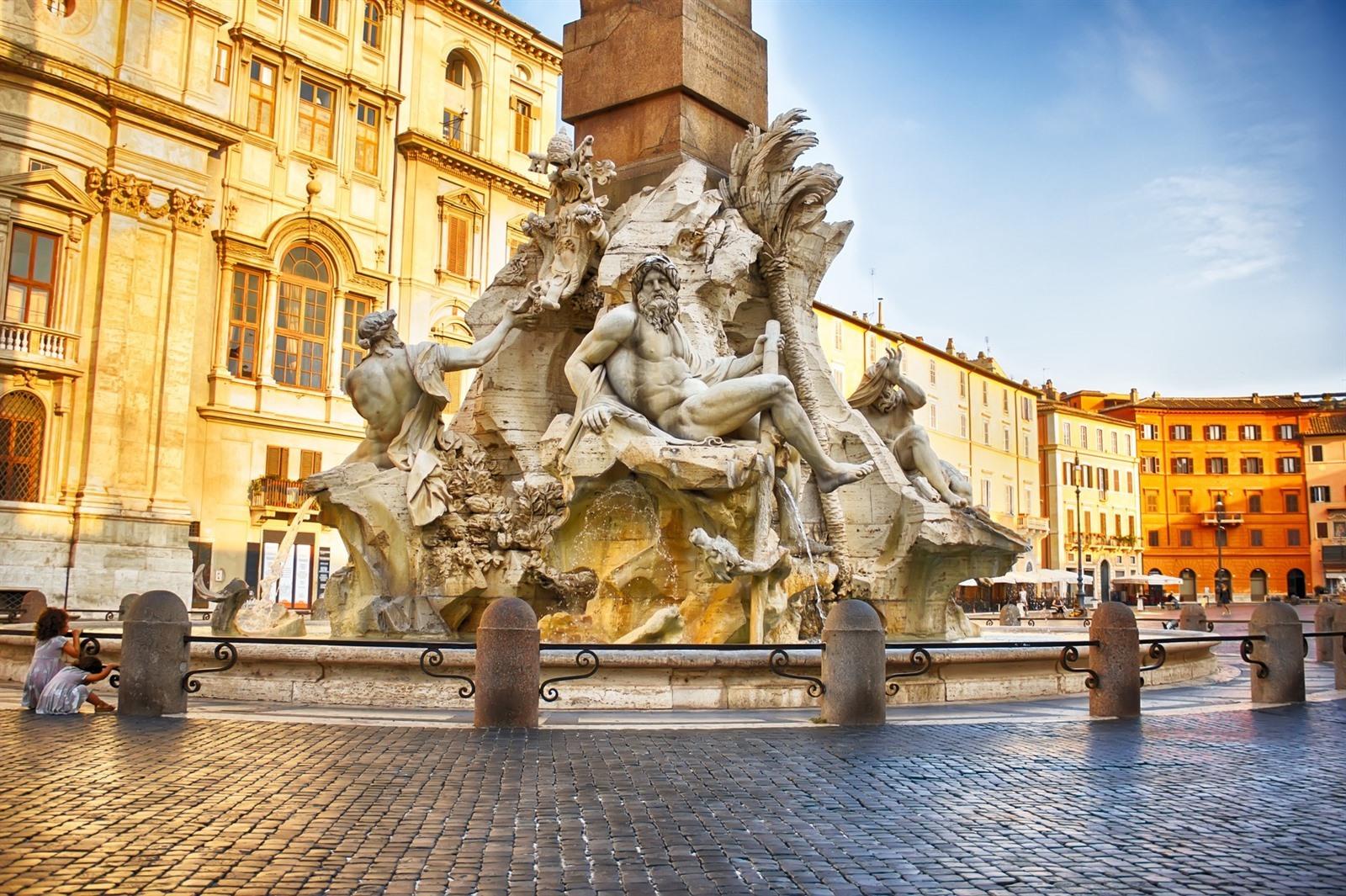
Fontana Del Moro (leg Fontein Vast) Bij Piazza Navona in Rome Redactionele Fotografie Image of
The Fountain of Neptune (Fontana del Nettuno) is located at the north end of the Piazza Navona. The ornate basin was designed by Giacomo della Porta (1532-1602) in 1574, but the sculptures weren't added until three centuries later. The fountain was finally completed in 1878 by Antonio della Bitta (1807-82), who carved the centrepiece of Neptune.

Fontein Van Vier Rivieren in Piazza Navona, Rome Stock Afbeelding Image of obelisk, rome 21339481
Piazza Navona is one of the most beautiful and famous squares in the centre of Rome. In 86 CE, emperor Domitian commissioned this square with its unique, elongated shape. This shape is the result of its original function as the stadium for athletics competitions (Circus Agonalis) with stands for 20,000 spectators.

Details Van De Fontein Van De Vier Rivieren in Piazza Navona in Rome, Italië Stock Afbeelding
Piazza Navona is one of Rome's most beautiful squares, located right in the historic center. Its unique long, oval shape, brimming with Baroque art and architecture, makes it the perfect place to go for a stroll and soak in the Roman ambiance. Highlights Be awed by the piazza's fountains, including Bernini's majestic centerpiece.

Rome, Piazza Navona, Fontein Van Bernini in Italië Stock Afbeelding Image of niemand, rivier
At the end of piazza Navona, there are two fountains by Giacomo della Porta: the Fountain of the Moor and the fountain of Neptune.

De Fontein Van Neptunus in Piazza Navona Redactionele Afbeelding Image of vierkant, mensen
The Fountain is surrounded by four other Tritons. Triton is a mythical Greek god who is considered a sea messenger. Fountain of the Moor was renovated again in 1874 when the original statues were moved to the Borghese Gallery and replaced with the copies that we can see nowadays in the Piazza Navona.. Fountain of the Moor is one of the three fountains on the square, located at the southern.

Piazza Navona in Rome bezoeken? Hét mooiste plein van Rome
Piazza Navona and its gorgeous baroque fountains, is one of the most breathtaking plazas in Rome Did you know… Piazza Navona used to be a stadium in ancient Rome? And they used to flood it and hold naval war-games there? One woman was almost entirely responsible for much of the most stunning baroque architecture you see on this square?

Famous Piazza Navona with the Fountain of Neptune, Rome, Italy Royalty Free Stock Image Stock
Piazza Navona is an elegant Renaissance masterpiece sometimes called the Square of Fountains. It's the very symbol of Rome. Piazza Navona is a long rectangle flanked by sublime palaces, statues, and fountains designed by the greatest artistic geniuses of the day. It's a place where beauty breaks in everywhere.

Bernini's Fountain of Four Rivers centered in Piazza Navona, Rome
Gian Lorenzo Bernini 1651. This is probably the most beloved of Bernini's fountains in Rome. The Fountain of the Four Rivers, or Fontana dei Quattro Fiumi, resides outside the Sant'Agnese Church, mid way in the Piazza. The fountain's statues are of the four river gods from the continents of Papal authority.

Fontana dei Quattro Fiumi fountains in Rome Ancient architecture greece, Ancient architecture
All that was to change in the 1640s, thanks to two of Italy's greatest artistic sons: Gianlorenzo Bernini and Francesco Borromini. Standing proudly in the centre of the piazza, Bernini's jaw-dropping Fountain of the Four Rivers encapsulates the drama of the Baroque like nowhere else, and is a must-visit on any tour of Rome.

Piazza Navona Fountains Travel Through Italy
The most beautiful parts of Piazza Navona are its three fountains, designed during the papacy of Gregory XIII: Fontana dei Quattro Fiumi Erected in the centre of Piazza Navona, the Fontana dei Quattro Fiumi (Fountain of the Four Rivers) was designed by Bernini in 1651.

Fountain of Neptune Piazza Navona, Rome
Fontana dei Quattro Fiumi ( Fountain of the Four Rivers) is a fountain in the Piazza Navona in Rome, Italy. It was designed in 1651 by Gian Lorenzo Bernini for Pope Innocent X whose family palace, the Palazzo Pamphili, faced onto the piazza as did the church of Sant'Agnese in Agone of which Innocent was the sponsor. Description

Piazza Navona, Fontein Van De Vier Rivieren En De Egyptische Obelisk Redactionele Fotografie
The Four Rivers Fountain by Bernini. The Four Rivers Fountains sits right in the middle of Piazza Navona, in the Centro Storico of Rome, work of Bernini's genius. The impressive fountain faces the church of Sant'Agnese in Agone, which was constructed by Borromini, Bernini's eternal rival! Hence, in the middle of the Baroque era, Pope.

Fountain of Neptune, Piazza Navona, Rome, Italy Piazza navona, Italy, Rome
Piazza Navona - Navona Square Your gaze is immediately drawn to the imposing Fountain of the Four Rivers in the center of the piazza, dominating the scene with its powerful presence and figures that seem to come alive from the sound of the rushing streams of water. The symbolism of the Fountain of the four rivers

Fontein Van De Vier Rivieren Op Piazza Navona, Rome Stock Afbeelding Image of rome, vierkant
Rome's Baroque Piazza Navona, also called the Square of the Fountains, is one of the city's most emblematic places. Complete with three fountains, and lined with ochre-coloured buildings adorned with flowers in summer, the piazza is constantly alive with tourists, street vendors and artists.

Rome Piazza Navona, Fontein Van De Vier Rivieren Stock Foto Image of fontein, rome 160275262
Piazza Navona is a large, historical square ( piazza) in the center of Rome. Piazza Navona is famous for several art masterpieces by well-known artists such as Bernini and Borromini, which make it one of the most important Baroque squares in the world.

Piazza Navona in Rome bezoeken? Hét mooiste plein van Rome
It was commissioned by Pope Innocent X and is located in the Piazza Navona in Rome. Statues of the fountain symbolize four significant rivers of that time: the Nile, the Ganges, the Danube, and the Rio de la Plata. Bernini's masterpiece stands in front of the church of Sant'Agnese in Agone, a work of Borromini. Contents History Design Opposition